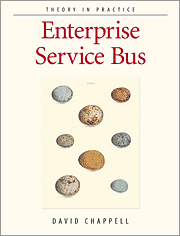My last post talked about technical investment. well like financial investment, its usually better to invest early.
Lee recently posted about Standards and Success Criteria. I think this is crucial for project success and hopefully this post is a concrete example of what I think are standards when beginning a project.
Setting up your solution well early can make life a lot easier. Some of the main concerns to me when initially setting up are as follows:
Naming
Establish a naming convention early on. It does not really matter what that convention is, just define it. There are some .Net guideline already established, use these if you don't already have one (iDesigns coding standard is pretty good starting place).
Be sure to talk to other developers and stake holders about the names you use and change them as needed. It will much easier to change these names early one than it will later on when multiple Dev's are in the mix and releases are already being made.
Use the correct names for commonly know things. One of the key areas I often see is pattern names used incorrectly. Make sure you understand what the pattern is if you are going to use the terms. Every self respecting developer should have GoF (or at least read it).
Libraries & tools
Define what Core and 3rd party libraries and frameworks you are going to use at the start of the project. If you are going to use .Net 3.5 and WCF use it from the beginning and use it properly.
Libries you need to consider include: Test/Mock libraries, Persistances/ORM, communication/ESB, UI, Logging, Framework (IoC, AOP etc) etc.
Tools include: Soruce control, analysis tools, code gen, IDE, CI, build, test runners/coverage, IDE plugins, documentation generators
This is also a good chance to be an early adopter. If there is a new beta release of a product you are interested in and the release is schedule for before your release, why not start using it now? Sure you will have to weigh this up yourself, however this has proved successful to me in the past.
One caveat here is make sure you know how to use the library before jumping on board. It is only after you have learnt the library that you know how steep the learning curve is. Personally I found it easier to learn a whole new language (Python) than picking up an ORM (NHibernate). Don't drag your team through hell because you wanted to play with the latest toy.
Build process
Establish a build process early on. Set you team up for success. You may not have CI set up yet but that does not mean you cant have the solution ready to go. Have your build scripts set up before you have any significant code base. Use the build script.
Ensure the build script is doing everything is should, you should not have to move dll's or copy config files etc. It should do it all.
Project Processes
Define how the project will be run from day one and do it properly. The term Agile is so flippantly thrown around, yet so rarely done properly... I find i quite annoying. To me its like saying I drive a Lexus when I am rollin' in a Toyota. There is nothing wrong with a Toyota, and it may be the best vehicle for the job, just call it what it is.
Tests
Whether you are TDD or not, I assume you are writing some sort of automate-able tests, whether they are strictly unit test or otherwise. Integrate this in to your build process. As we are talking about Greenfield projects here, define your expected test coverage up front. Now this is a doable edged sword, but i think it is worth while. Also encourage your Dev to truly embrace TDD and correct UNIT testing using mocks/fakes/stubs.
On a side note, I was talking to a Java mate yesterday and apparently there is a a pug in for IntelliJ that runs your test in a back ground thread every time you build in the IDE. With the multi-processor machines we uses nowadays, why not? It got me thinking, i could pretty easily set up something like that too for my local machine.
Follow coding best practices
The first port of call in doing this is setting warnings as errors and setting the error level as high as it can go in each of your project files in the solution.
Get FXCop and use it. if there are things you don't like then document and removed the waring, but start with it.
Some will disagree with me on this, but on this subject I say F*^K 'em. Not having these on just sets up a slippery slope. I would rather deal with the issues as they come up, not retro fix.
Follow design best practices
Terms like IoC, AOP & TDD are not just cool buzz word, they are best practices there to make YOUR life easier. Using IoC make TDD easier. Using TDD encourage the use of IoC. AOP cleans up your code from so the business problem at hand is not cluttered with technical sideshow concerns.Use these, embraces these, understand these and introduces them early on into the picture. Create a pit of success.
Also be sure to use a metrics tool like NDepend to check on your solutions health. Again, dealing with issues early may help stem some nasty heads from popping up later.
Defining future Standards and Success Criteria
This is pretty broad and somewhat recursive, but there will be personally issues that you are concerned with and project specific thing that should be address early on in the picture
Subscribe to:
Post Comments (Atom)





No comments:
Post a Comment